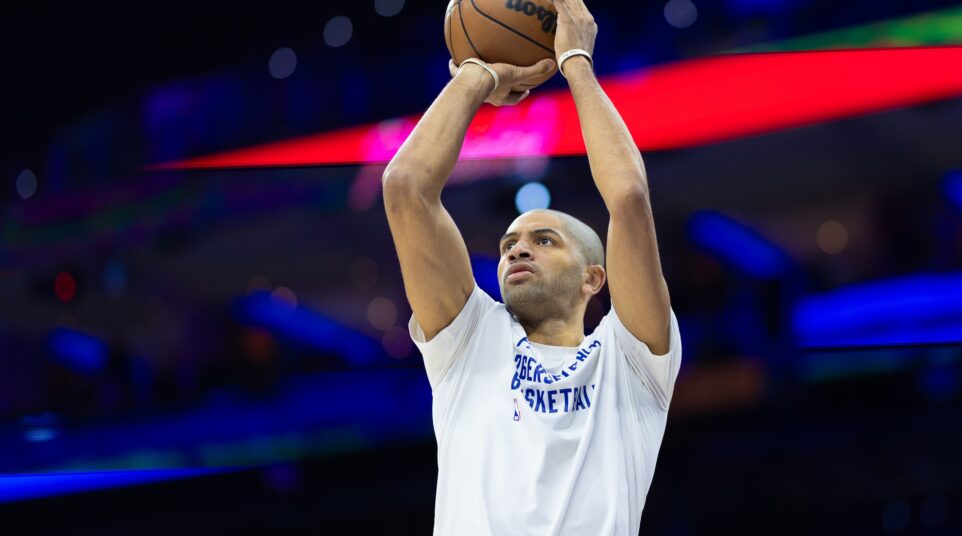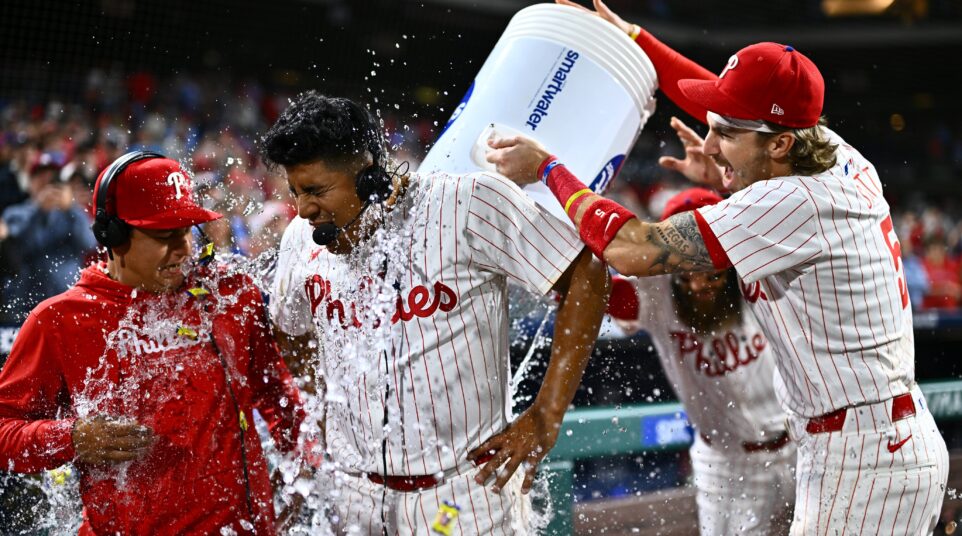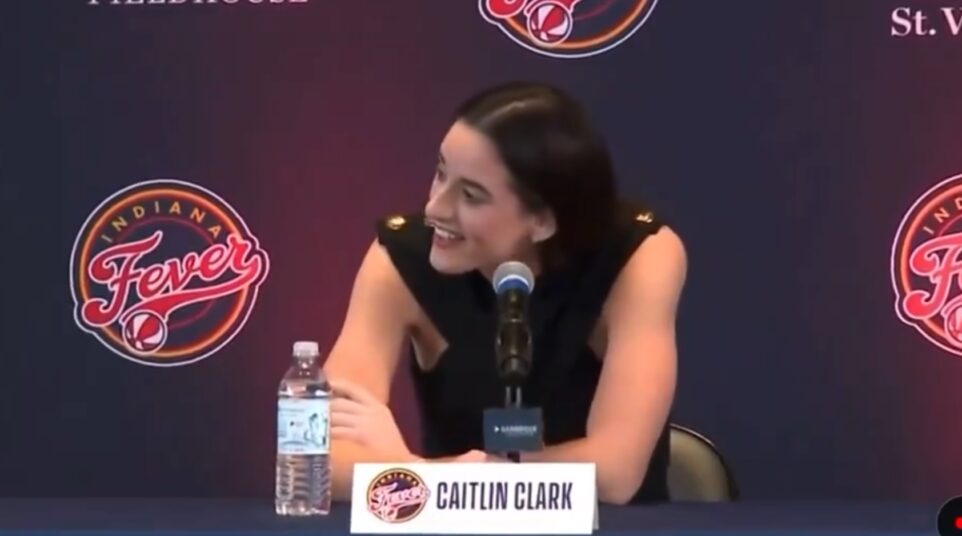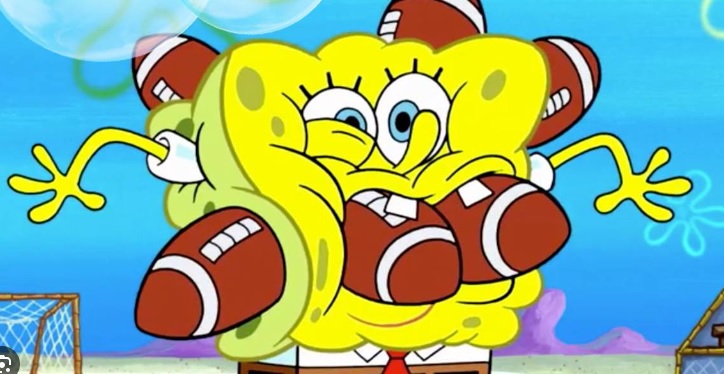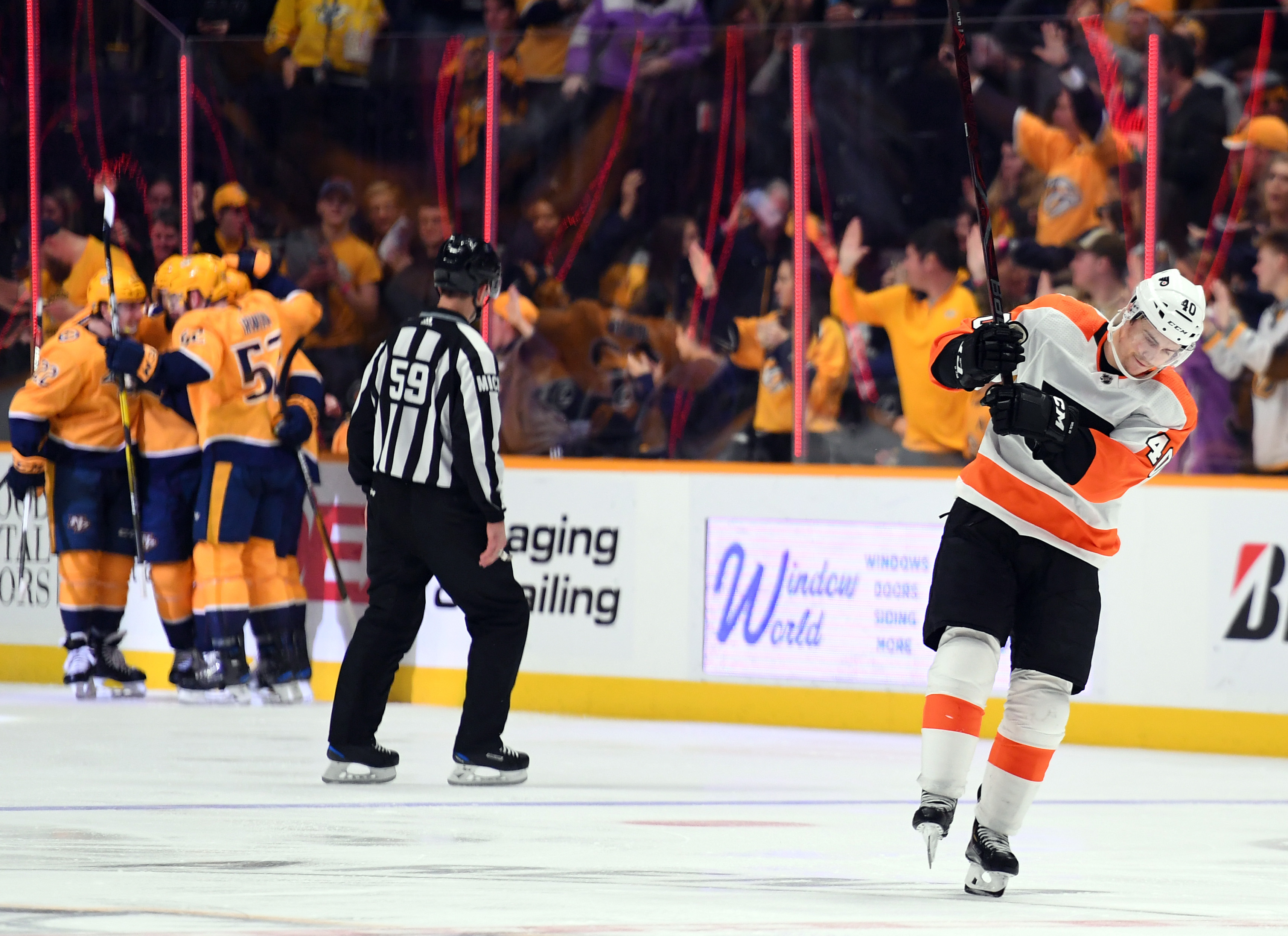
This Break Up Shouldn't Be Hard to Do - Thoughts After Another Bad Flyers Road Trip
This quote hasn’t aged well:
“The bottom line is we thought we needed to make more progress. For me, it boiled down to one question: did I think we could do better as a team now, not two years form now, but now, and the answer to that question was yes.”
That was Comcast-Spectacor Chairman Dave Scott at the November 27th press conference when the Flyers fired General Manager Ron Hextall. The team was 10-11-2 at the time of Hextall’s firing.
Here we are, 36 days later. The team replaced Hextall with Chuck Fletcher, also fired head coach Dave Hakstol and replaced him on an interim basis with Lehigh Valley Phantoms coach Scott Gordon, and has made one roster move of note – calling up 20-year-old wunderkind goalie Carter Hart to jump start his NHL career.
In those 36 days, the Flyers have gone 5-8-3, including a 4-0 loss on New Year’s Day in Nashville, the fourth straight loss (0-3-1) for the Flyers on a mostly disappointing road trip.
They now sit in last place in the Metropolitan Division, 13 points behind the third place Pittsburgh Penguins and 12 points behind Montreal for a final wild card spot in the Eastern Conference.
They are only one point ahead of Ottawa and St. Louis for the worst record in hockey. Their minus-29 goal differential is tied with Los Angeles for the third-worst in hockey behind only Ottawa and Chicago.
Special teams is minus 20 in goals for the season. That’s dreadful. The penalty kill, although it has been solid since Black Friday, killing at an 85.6% clip in the last 18 games, still ranks 28th in the league at 75.2% for the season. The power play is embarrassingly bad, ranking dead last in the league at 12.4%.
I gave you all that data to say this:
This team is nowhere close to being a better team now than two years from now. None.
A change in management didn’t help. A change in coaches didn’t help. What is painfully obvious, and has been for months with this team, is this group, as currently constructed, is not a good fit and is a bad hockey team.
That’s not to say there isn’t talent here, because there is, but they really don’t supplement each other well. There are pieces that don’t fit. There are players not living up to expectations, and the realization has finally set in that this team is still further away from being a contender than it thought.
The process of being the new Flyers GM has been eye-opening for Fletcher in his five weeks on the job. He has had an opportunity to evaluate what he has, what he needs, and has begun formulating a plan on how to get there.
That said, it isn’t going to be easy. It’s going to be painful. And the Flyers locker room, which despite all this team’s flaws and foibles is a remarkably tight-knight group, will finally have some much-needed upheaval.
Players are about to be traded. In two months, when looking back to today, there is going to be a whole new look for this roster.
No longer can the players hide behind the excuses of an oppressive GM or a voiceless coach. They are finally going to be held accountable for who they are and the fact that they can’t win together. Fletcher sees this. He knows this isn’t a “win now” team. He has to know he’s got to go into sell mode, and do so quickly.
But how should he begin his roster deconstruction?
After the jump is one suggestion:
Goaltending
This is a real sore spot for this team. It’s almost as if this open wound has been festering for more than a generation. However, Hart is believed to be the white whale. Finally, the answer the team has been looking for since, well, Hextall pre-Eric Lindros trade.
Hart has assimilated himself well in his brief NHL career to this point, but after winning his first two NHL starts, he has dropped three straight and has looked a little undercooked with each passing start.
There’s no doubt the team plays differently in front of him. They play a tighter defensive style. They are committed to blocking shots for Hart like it’s Game 7 of a playoff series. And the Flyers have been careful to try to set him up to win. His first three starts all came at home, and all three were against low-scoring teams (or one in Nashville that was missing a ton of offensive talent due to injury).
On the road, the Flyers were noticeably choosy about where Hart started, eschewing games in New York, Tampa and Nashville on the road in favor of Michael Neuvirth and having Hart start in less daunting arenas like Florida (which is basically a home game for every visiting team) and Carolina. And even in Carolina, where Hart had a clunker of a start, Gordon had a quick hook and removed him after allowing three goals on just 10 shots in the first period, protecting his top prospect.
In short, the Flyers are exhibiting a pattern where they won’t say it publicly, but they still don’t think Hart is ready for long-term play at the NHL level.
Fletcher did talk, on this trip, about the need for Hart to play more – but every indication I could infer would be that ideally this will happen in the AHL.
As soon as Anthony Stolarz is cleared to return, He’ll probably share the time with Neuvirth – who has played pretty well these past two weeks, even if his body is akin to Elijah Price (Samuel L. Jackson’s character in Unbreakable and Glass). This will allow Hart to return to Lehigh Valley and keep playing.
Brian Elliott is still about a month away from returning, so he’s not in the conversation as of now.
That said, I still believe Fletcher is considering adding a veteran goalie, and that goalie could be Jonathan Quick of Los Angeles despite the four years and $5.8 million annual cap hit.
It’s the kind of move for this team for the remainder of this year and then use next season as a transition season from Quick to Hart and then Quick can finish out the last two years as a reliable, veteran backup to Hart.
I still think this is something that is coming sooner rather than later, however…
Forwards
Something has to give with this core. It’s just not working. First Hakstol and now Gordon are constantly shuffling lines trying to get players going. The three players most shuffled are Wayne Simmonds, James van Riemsdyk, and Jake Voracek.
The reason they’re being shuffled is they either can’t produce like they once did, aren’t a good fit for this lineup, or are simply having a down year despite still having higher end value.
And yes, the order of players and reasons are symbiotically aligned.
Simmonds is a real conundrum. The guy still busts his ass every night. He still gives it maximum effort and he’s a well-liked and respected locker room guy.
That said, he’s still a shell of himself and hasn’t produced with anywhere near the efficiency he did prior to his injury-plagued 2017-18 season.
As of Saturday we’ll be halfway through this season. Right now Simmonds has 11 goals and six assists for 17 points. He’s on pace for a 35-point season, which would easily be his worst season as a Flyer based on points per game played (He had only 32 points in 2012-13, but that was a lockout-shortened season and he played just 45 games).
The problem with Simmonds is he has seen his skill as a defensive player diminish, especially in the last few seasons. He used to be quite reliable defensively. Now, he’s more a liability.
As such, he struggles at 5-on-5. He’s usually relegated to third line duty, and even though he’s had stints where he’s played in the top six, he’s still a below average play driver (According to NaturalStatTrick.com, his Corsi For percentage is 49.19 which ranks 83rd out of 121 forwards with at least 500 minutes of ice time.)
But where Simmonds has earned his dough in his career has been as a net-front presence on the power play. Excluding that aforementioned lockout-shortened season, Simmonds has averaged 21 points per season in his Flyers career on the power play. As we approach the halfway point of this season, he has four.
And when did those power play points occur?
- Power play goal in the season opener in Vegas on 10/4
- Power play goal and a power play assist in the home opener against San Jose on 10/9
- Power play goal in New York against the Rangers on 12/23
That’s it.
So yeah, that’s one power play point in the last 36 games.
What you have here is a guy who is below average at 5-on-5 and who is not only performing below expectations on the power play based on his resume, but who is arguably the worst producing player on any top power play unit in the NHL.
It would take a really long time to research it, but I’m betting there aren’t any other players who regularly play on the top power play unit for their team who have one or zero points on the power play since 10/9.
So, other than the fact that he’s a gamer who gives you his all on every shift, what is Simmonds’ value to the team now, or in the future?
It’s sad to say, but there isn’t much – which is why he has to be the first move here.
He has to be the person Fletcher jettisons to rock the locker room.
Simmonds has value. He can certainly return to that level of power play production somewhere else. He can still give you good third line minutes on a team with better top-6 talent than the Flyers where he can truly be a secondary scorer and not someone the team is consistently leaning on for offense.
But because he’ll be a free agent at season’s end, his value is limited. The sooner he can be moved the more Fletcher can get in return. Toronto remains quite interested. I’m sure there are other teams who would see Simmonds as an upgrade for their power play (Nashville could use him, and Preds coach Peter Laviolette always liked Simmonds when he coached him. Columbus, Montreal, Buffalo and the New York Islanders are also teams who could use power play help and who might express interest as they make playoff pushes).
This is a slam dunk. It would shake up the locker room to trade from the core and one of the team leaders – and it would set the Flyers up with more assets down the road.
As for van Riemsdyk, this is where things get more interesting.
Quite simply, the guy isn’t a good fit here.
He’s a league-average play driver (CF% is 50.00) which is likely boosted a little bit from playing a solid chunk of his 23 games with Claude Giroux. But even though he missed 15 games with an injury, he’s nowhere close to the goal-scorer he was in Toronto.
He averaged 30.5 goals per 82 games played in six seasons with the Leafs. He won’t play 82 because of the injury this season, but assuming he doesn’t miss another game this season, he’ll play 67 games.
Based on his Toronto output, that should still be good enough for 25 goals for the Flyers. However, based on how he’s performed so far, he’s on pace for 15 goals for the Flyers.
Now, part of that could be he’s not being given a regular role on the top power play unit her like he was with the Leafs. He did amass 88 power play points in six seasons in Toronto. He has three for the Flyers in 23 games so far.
There is an argument that could be made (based solely on the statistics above) that he should be given a chance ahead of Simmonds, and maybe that would bring a little more production, but keep in mind that last season was the only time in his career he potted double digit power play goals (he had 11). So, it’s not like he’s a sure thing with the man advantage either.
JVR has never been a physical guy at 5-on-5, which is what soured the Flyers on him initially. When you are a big body you need to play a more big-bodied game, and he’s not the kind of guy who uses his size as much as he should when it comes to winning board battles and protecting the puck.
He’s limited in the speed department, which on a slower team like the Flyers puts a spotlight on his weakness. And he doesn’t fit anywhere. The Flyers really don’t want to play Giroux at center because he’s much better at this age on the wing. so JVR can’t play on the top line. He’s been a disappointment on the second line and really doesn’t play the style of game to fit on the third line.
He needs to play with a dynamic distributor at center who can set him up for his goals. The Flyers don’t have that player here – at least not right now.
JVR is a guy that a young, up-and-coming team might be interested in since he has term and dollars on his contract.
I look at a team like Colorado, who has some real top-end talent and a lot of cap room, as a team that could make sense. Additionally, Buffalo and the Islanders would also make sense here as well as they could afford JVR and his four more years with a $7 million cap hit each year, although I’m not sure he would fit the mold of what Barry Trotz espouses in his defense-first system in New York.
As for Voracek, he’s a playmaker with a lot of value and isn’t protected by a no-trade clause. But his contract – five more years at $8.25 million per, is a little harder to move. But, would a team that is all-in this season in pursuit of the Cup be willing to take a chance on that contract if they could send some salary back to the Flyers in return?
I look at Nashville again as a team who thrives on being the best defensive squad in the NHL. A playmaker is exactly what they need to supplement their strength. Voracek would also improve their below average power play as well.
Another team that could have interest is Vegas. Voracek would immediately become their highest-paid player. And while they have a handful of guys signed long-term, none is seeing an average annual salary higher than $5.95 million (Nate Schmidt).
As for other forwards who could go:
- Michael Raffl – he’s playing his best hockey of the season right now and is the kind of depth forward good teams are looking for. He’s a free agent at season’s end though, so he doesn’t have much in the way of value in return, but he is another really well-liked guy in the locker room and trading him would have an impact.
- Dale Weise – Believe it or not, the veteran grinder has similar value to Raffl – especially if the Flyers are willing to eat some of his remaining salary (He’s signed through 2020 at $2.35 million per season).
Defense
You might not see it yet, but working with Rick Wilson is already paying dividends for a few guys. Ivan Provorov is still struggling with handling pucks this season (another grenade on his stick led to a goal in Nashville), but on the whole, he’s been better since Wilson came on board.
He’s still getting the lion’s share of the minutes and is still the Flyers best defenseman. He’ll be fine.
Travis Sanheim has flourished since Wilson came on board. He’s playing with a lot more confidence. He still has the occasional mental lapse, but he’s been vastly improved.
As for the rest of the defense, I’m not sure the Flyers are beholden to any of them.
I don’t think Robert Hagg gets moved, but he’s just a guy. He’s probably best-suited for a third pair long term and has been asked to play above that for most of the season.
Andrew MacDonald was unjustly criticized last season, but not so this season. He’s not been good. He’s still an NHL defenseman, despite the criticism to the contrary from the Twitterverse, but he’s no better than a No. 6-7 guy at this point, and his contract is still unmovable.
Radko Gudas could be of interest to a team looking for a depth defenseman, but again, the Flyers would likely have to eat some of his $3.35 million cap hit, as he’s signed through next season as well.
Shayne Gostisbehere has played better in the last few games (despite the team not looking good) but I’m not sure it’s good enough to stop Fletcher from potentially dangling him as an interesting carrot this trade deadline.
Gostisbehere has definite defensive limitations, but teams looking to add to the blue line at the trade deadline often are looking for a guy who can produce offensively as well. That and a team-friendly contract situation could make Ghost an attractive trade piece for contending teams (Buffalo? Boston?) come the end of February.
Wither way, I think guys like Sam Morin, Phil Myers, and maybe even Mark Friedman are going to be given a chance in the NHL at some point this season to prove they belong.
Anyway you slice it, this team’s roster needs to be carved up, and soon. I expect Fletcher knows that and will make it happen in the very near future.


